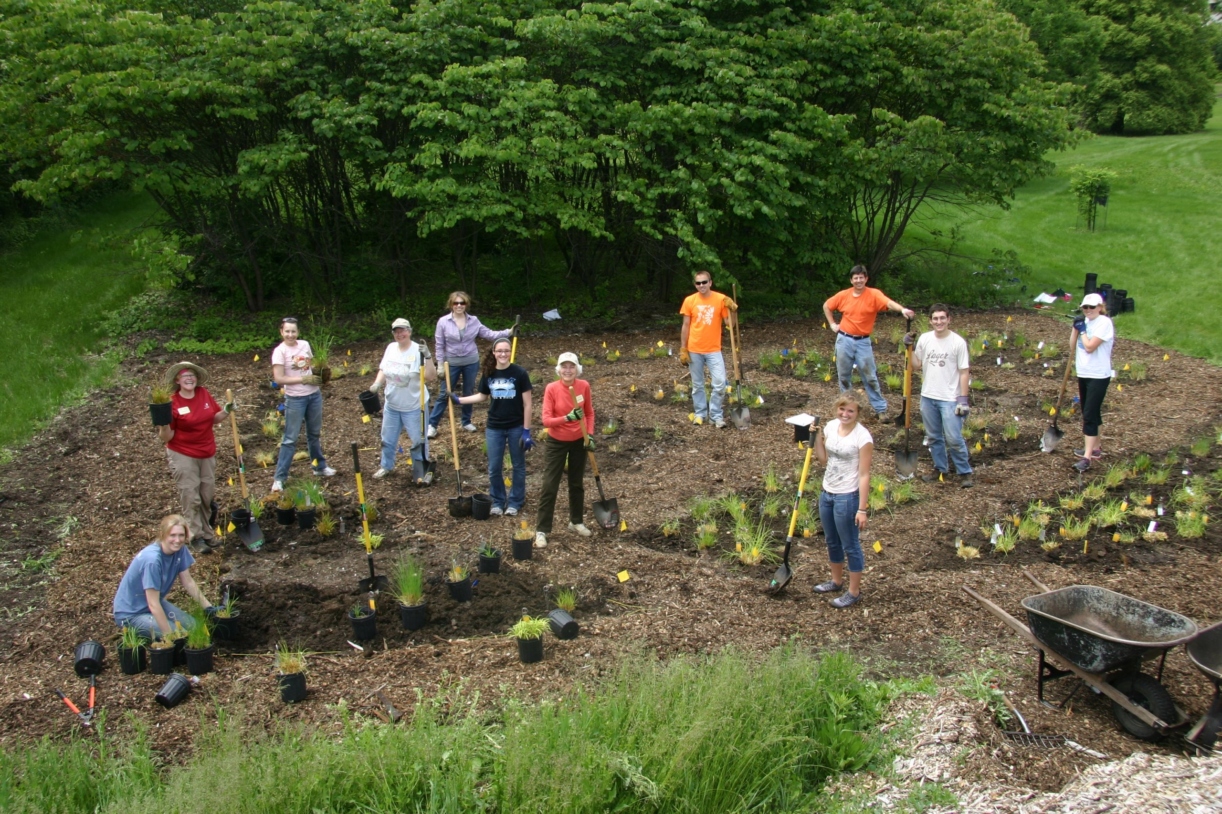Front-line volunteers make Arboretum guests feel glad they are here.
People who like to work with people may enjoy assisting at the Visitor Center Information Desk, the Sterling Morton Library, The Arboretum Store, as a Group Tours Greeter, in Membership Sales, as a Docent leading horticultural walks, in the Children’s Garden, or as a trained problem-solver in the Plant Clinic.
The Arboretum Store
This beautiful retail store entices and delights guests with seasonal merchandise and nature-themed goods. Volunteers work with staff members to keep merchandise organized, welcome and help customers, and assist in the stockroom to prepare merchandise for display and sale.
Bike Patrol
The Arboretum allows bicycling on all paved roads, year-round, whenever the grounds are open. Bike Patrol members, trained in First Aid and provided with radios, supplement security staff in patrolling roads, assisting bicyclists, and providing information to those new to biking at the Arboretum.
Trail Patrol
Sixteen miles of trails wind through the East and West Sides of the Arboretum. Trail Patrol volunteers, trained in First Aid and provided with communications radios, walk the trails and provide extra security for guests on high visitation days. This position requires volunteers to walk on mostly mulched chip trails for a period of three to four hours. Volunteer shifts are scheduled by security rangers.
Central Area Volunteers
If you like to meet and greet people and have a good familiarity with the Arboretum, this would be a good spot for you. Central Area Volunteers orient guests to the Visitor Center area, Maze Garden, paved walking paths, activities of the day, and directions to other locations. Whenever there are busy days, we like to have a Central Area Volunteer greeting newcomers to the Arboretum.
Docents
These volunteers guide drop-in guest walks through interesting areas of the Arboretum, such as the Groundcover Garden or the Conifer Walk. Docents also plan special walks, designing creative scripts for the Ice Age Walk or the Summer Solstice Walk, for example. Although many Docents are graduates of Arboretum certificate programs, the Arboretum also welcomes individuals with special training or experience with plants and trees.
Children’s Garden
The Arboretum’s award-winning four-acre Children’s Garden has seven different areas for children ages 2 to 11 to explore and experience hands-on learning about trees and nature. Volunteers are trained in First Aid, use a security radio, are familiar with horticulture in the garden, and provide customer service. Volunteers monitor for safety and assist staff with programming in the Children’s Garden.
Group Tour Greeter
From the time their tour bus pulls up to the entrance until the time the bus leaves, guests are in the capable hands of a group tour greeter. Groups are welcomed, oriented to the Visitor Center and the Central Area, guided to their activities (a Docent walk, Tram Tour or luncheon), and assisted as needed by these special Arboretum ambassadors.
Membership Sales
During the busiest times, Membership Sales staff need help processing paperwork for new memberships and are extremely helpful in answering questions for guests. Many guests join the Arboretum on their very first visit!
Plant Clinic
Volunteers who are Master Gardeners, or graduates of one of the Arboretum’s certificate programs (Landscape Plants, Home Gardening, or Naturalist Certificate) are invited to apply to this special area. Plant Clinic volunteers advise on plant identification, care, diseases, or choosing trees for the home landscape. The Arboretum’s Plant Clinic offers advice to phone callers and walk-ins.
Sterling Morton Library
Library volunteers read shelves, shelve books, assist with research, and assist the library staff with other projects and events sponsored by the library.
Visitor Center Information Desk
Working with staff members, these volunteers answer questions of all kinds, direct guests to Arboretum locations and events, assist with ticket sales and membership sales, and are front-line customer service experts. Knowledge of the Arboretum and the ability to use a computer is essential, but other customer service areas can be learned on the job.
